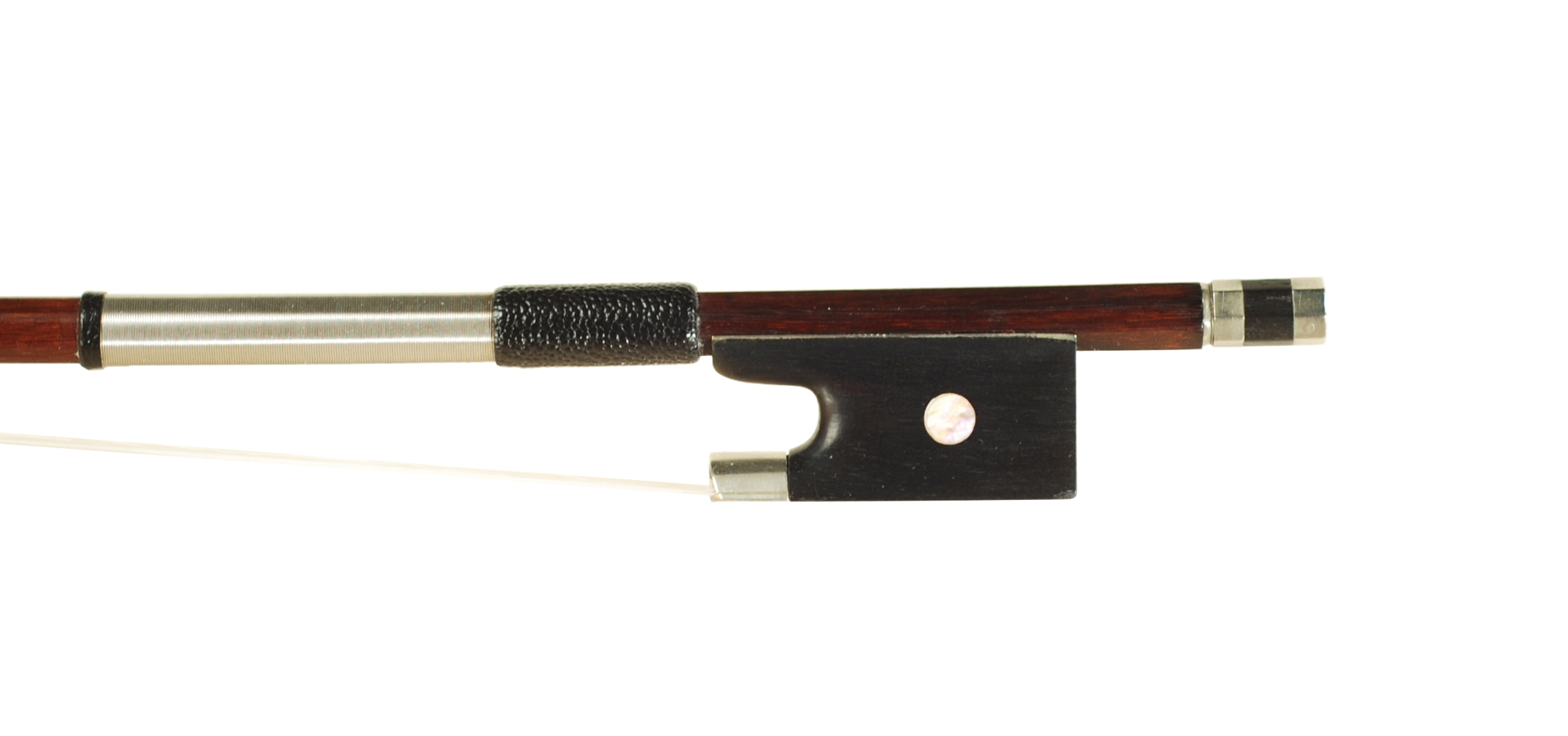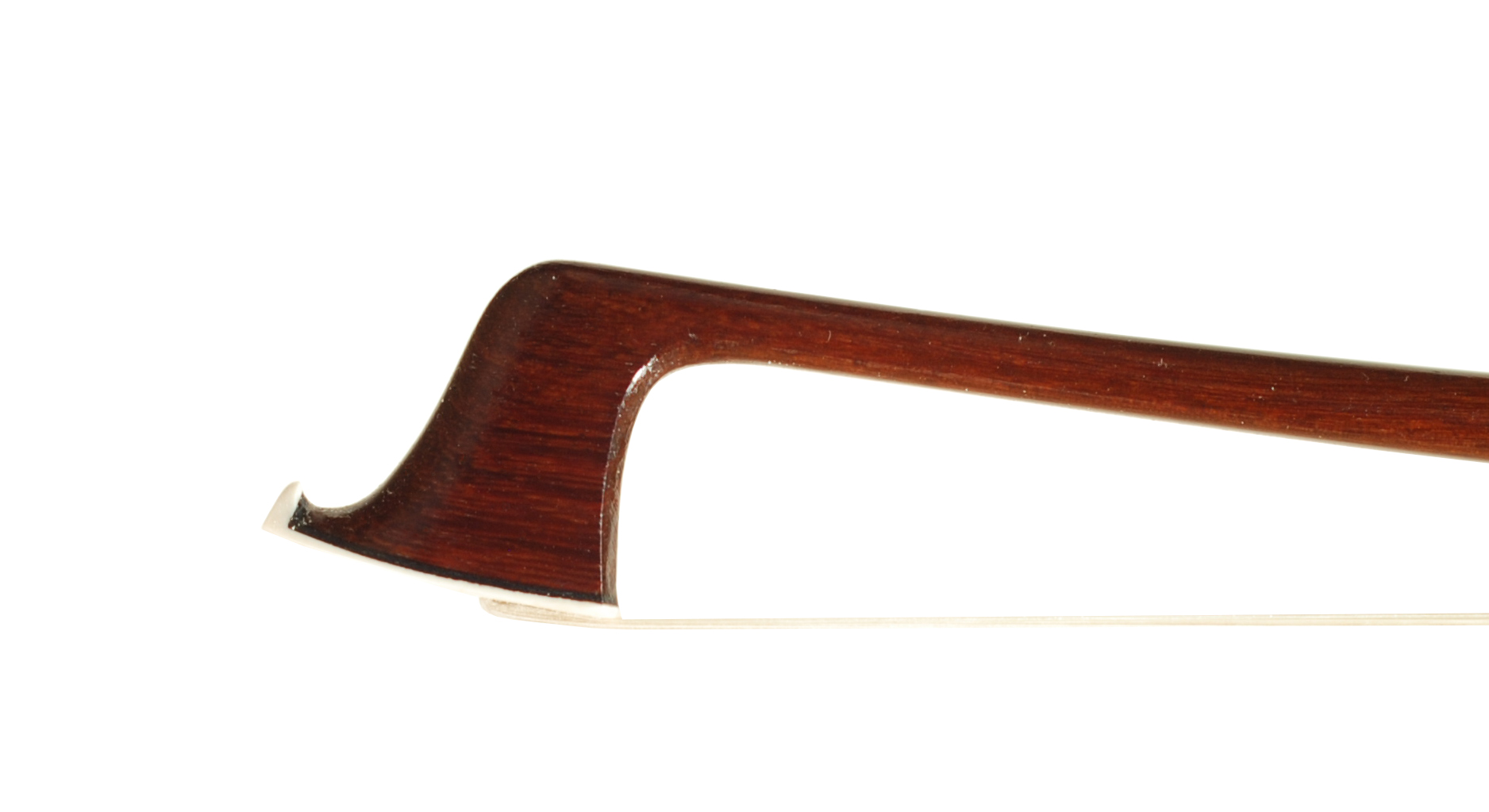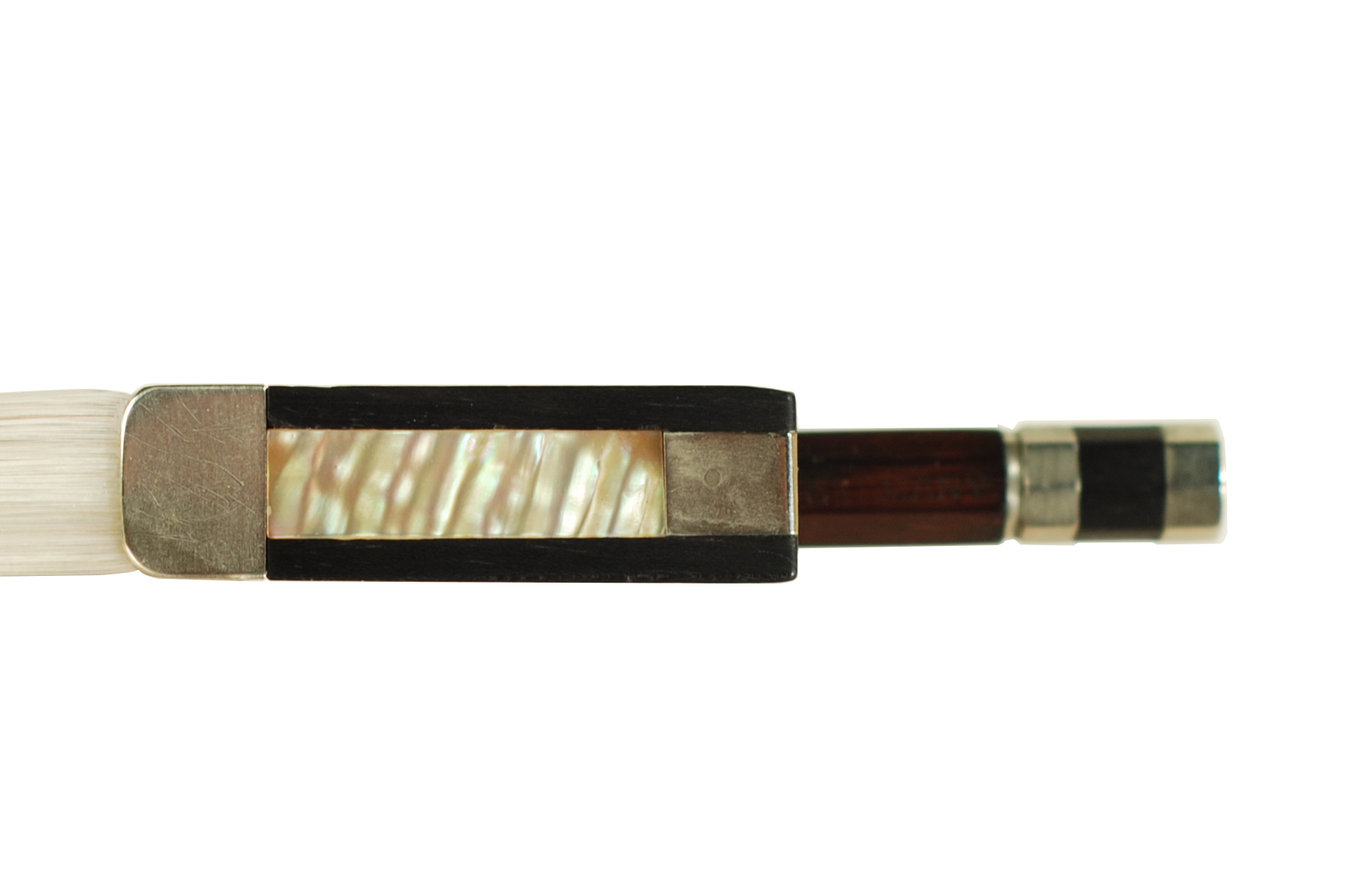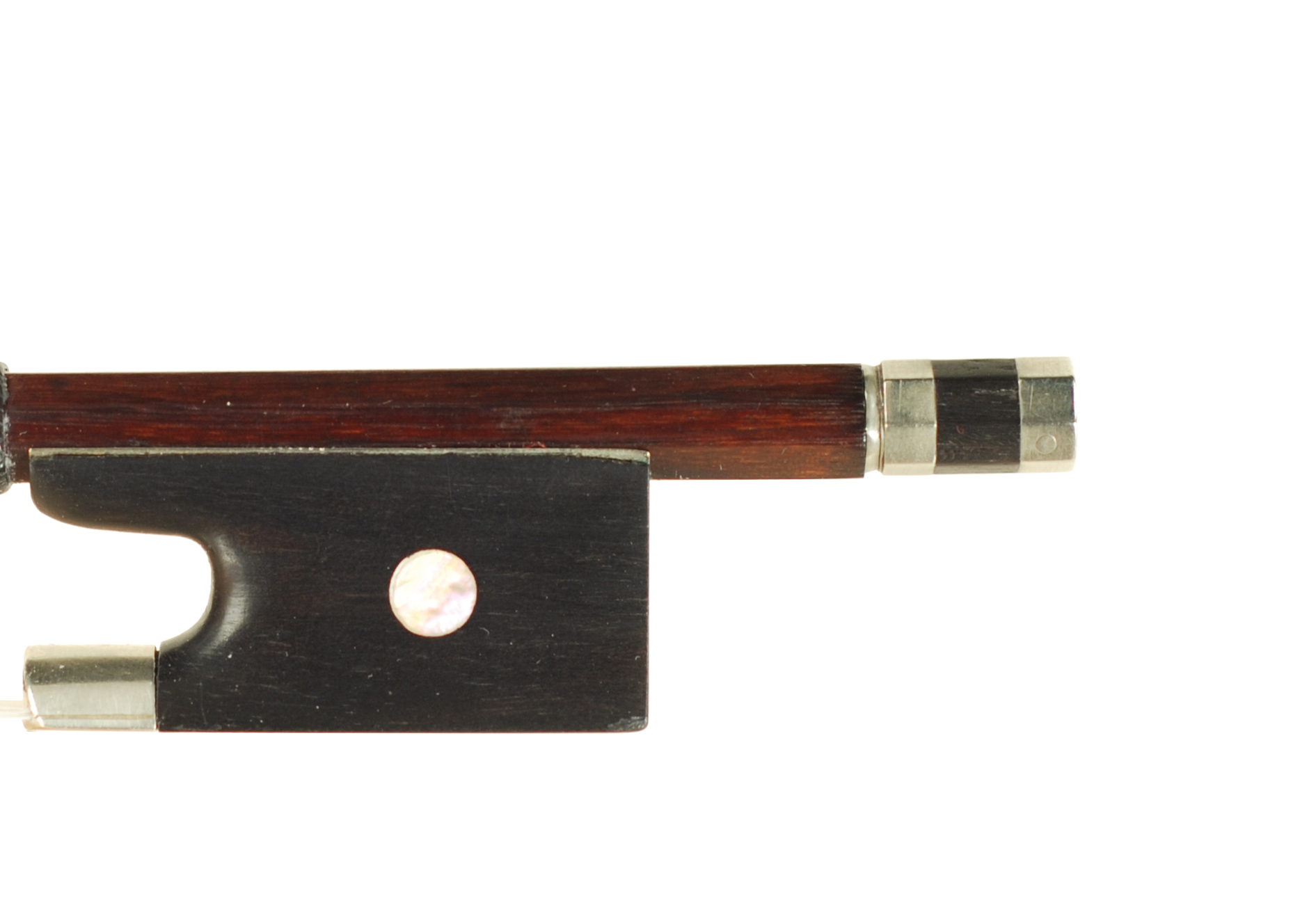Illegible Stamp Nickel Mounted Violin Bow- Germany circa 1925-1935
$795.00

Stamped:
I believe this bow was made in the Markneukirchen area after World War I. Markneukirchen is the city where many went to be makers and journeymen went to develop their skills. They hoped to get fully employed by a shop that might pay a worker enough to live on. They might have received a bench test given by the shop owner and demonstrated their work with a knife, a chisel, small block planes, and their sharpening skills. When I started as a young apprentice, I cut sandpaper for each bench to the desired widths and length each person wanted and the correct grits. I also spent one entire day every two weeks sharpening the basic tools that were owned by the shop, especially at the bow benches. The bow guys were especially fussy about the correct angles and a polished finish on their chisels. In the 19th and 20th century young apprentices developed their skills for 3-5 years and some never left, getting hired for better wages and better hours. There were many though that didn’t continue; if they did not show potential they were let go after a year. Apprentices back then signed contracts for a year and worked long hours, in many cases from sunup to sundown. I have seen these signed old contracts sold at auctions in Europe. These shop owners had a practice not to have young makers put their personal name on a bow. Our bow does have “GERMANY” stamped on the bottom flat butt of the bow near to the mortise
This is one of those sticks, a non-stamped bow. No maker’s name, just origin. It is a great nickel mounted stick with a semi-firm fight in the bow. In restoring the bow we gave the stick a good cleaning, new tip, new nickel winding, leather thumb, along with a new mother-of-pearl eye on the player’s side in the frog. I added 19.0 mm more length to the original winding to bring the weight up slightly and change the balance of the bow. The ebony frog has single eyes, a three-piece endscrew, and the heel of the bow is one piece, another good sign of an older bow. The lining, heel, and button on the end screw are held in place by pin work. There are no screws. The craftsmanship is very nice and helps this stick stand out in a crowd. The bow handles well, having good balance giving the stick a feel of no tip heaviness. The stick itself is streamlined; not thick or with added excess girth. It is pernambuco wood, round in section, and finished off with nickel silver mounts. It is a great bow for the money.
Weight fully haired 60.5 grams






